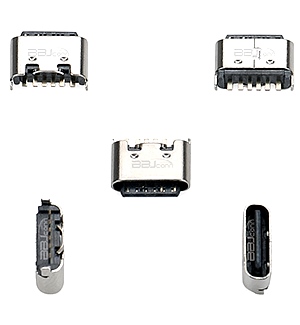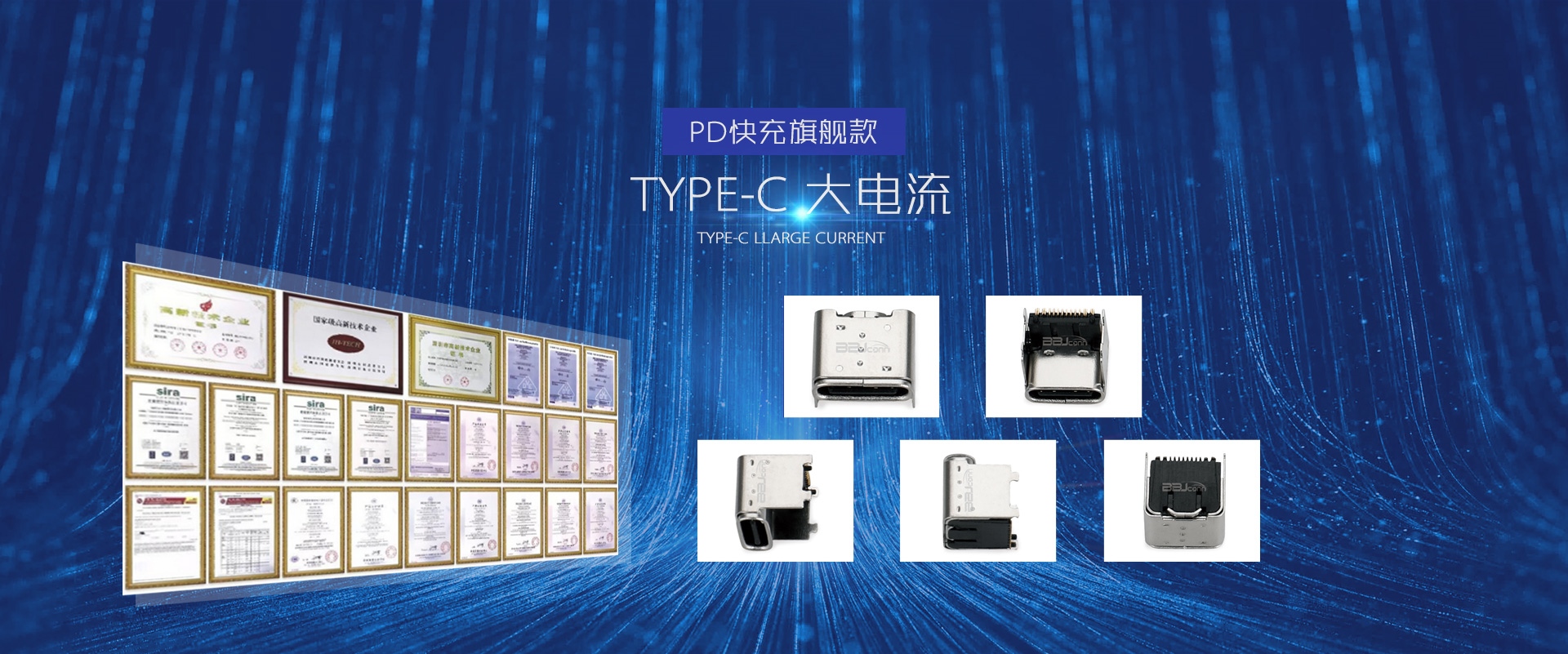In-depth analysis of the characteristics and application prospects of Type-C 16pin interface
Since its launch, the Type-C interface has quickly become an important connection standard in various electronic devices with its efficient performance, compatibility and reversible design. With the continuous development of technology, the versatility of the Type-C interface has gradually been recognized by people. Discovered and widely used in different fields. As a specific version of the Type-C 16pin interface, its unique design and functions give it significant advantages in data transmission, charging, audio and video transmission, etc. This article will focus on multiple angle analysisType-C 16pin interfacecharacteristics and discuss its future application prospects.
Basic characteristics of Type-C 16pin
The Type-C 16pin interface is a variant based on the USB Type-C standard. Its 16-pin design allows the interface to provide more power and data transmission channels. Compared with the traditional USB interface, the Type-C 16pin The interface has significant improvements in data transmission rate, power supply, and connection flexibility. First of all, the Type-C 16pin interface adopts a symmetrical design in physical structure, which means that the insertion effect is the same regardless of the front and back of the plug. , which greatly improves the convenience of use.
Type-C 16pin’s efficient data transmission capabilities
A core feature of the Type-C 16pin interface is that it supports high-speed data transmission. Through the reasonable layout of 16 pins, the Type-C 16pin interface can support the USB 3.1 standard, with a maximum data transfer rate of up to 10Gbps. Compared with traditional USB 2.0 Compared with USB 3.0 interface or USB 3.0 interface, the speed advantage of Type-C 16pin interface makes it the first choice for large-capacity file transfer, high-definition audio and video playback and other application scenarios. In addition, Type-C The 16pin interface can also support the two-way flow of data and power through different transmission protocols, thus improving the overall efficiency of the system.
High power transmission characteristics of Type-C 16pin
Compared with the traditional USB interface, the Type-C 16pin interface not only provides a higher data transfer rate, but also greatly improves the power transmission capability. The Type-C 16pin interface supports a maximum power transmission of 100W, which means that it can Power devices provide charging support and can even provide power for laptops, monitors and other devices. For devices that require high current support, the Type-C 16pin interface shows strong adaptability, greatly expanding its application scenarios.

Advantages of Type-C 16pin in audio and video transmission
The Type-C 16pin interface is not only suitable for data and power transmission, it also shows significant advantages in the field of audio and video transmission. By supporting the DisplayPort Alternate Mode (DP Alt Mode) protocol, the Type-C 16pin interface can achieve high-definition video output. This makes it an ideal choice for high-end display devices, TVs, projectors and other equipment. With its powerful data transmission capabilities, Type-C The 16pin interface not only supports 4K resolution high-definition video playback, but also supports higher-standard audio transmission to meet users' needs for high-quality audio-visual experience.
Application prospects of Type-C 16pin
The versatility and high performance of the Type-C 16pin interface make it have broad application prospects in various fields. First of all, in consumer electronics such as smartphones, tablets, and laptops, the Type-C 16pin interface has become one of the standard interfaces , especially in the new generation of high-end devices, this interface has almost become standard. In addition, the Type-C 16pin interface will be increasingly widely used in smart home, automotive electronics, virtual reality (VR) and industrial control fields. .For example, future smart home devices will rely on Type-C The 16pin interface provides data transmission and power supply, while improving the interconnection capabilities between devices.
Challenges and development directions of Type-C 16pin
Although the Type-C 16pin interface has shown many advantages, it still faces some challenges in its development process. First, although the Type-C interface is popularizing quickly, due to the relatively complex technical standards involved, some users and devices There is still a certain gap in manufacturers' support for it. In addition, although the Type-C 16pin interface supports high-power transmission, in practical applications, how to ensure the safety and stability of power transmission is still a problem that needs to be solved.
Looking to the future, the Type-C 16pin interface will continue to evolve with the continuous development of technology. While improving the data transmission rate and charging efficiency, the reliability and compatibility of the Type-C 16pin interface will be further enhanced, providing various smart devices with The connection provides a more stable and efficient solution.
The Type-C 16pin interface has become an important connection standard in modern electronic devices with its high-speed data transmission, strong power supply capability and flexible audio and video output functions. With the continuous expansion of application scenarios, the Type-C 16pin interface will be used in the future. It plays a more important role in the development of science and technology. Whether in consumer electronics, smart home, industrial control, automotive electronics and other fields, the potential of the Type-C 16pin interface will be further released.
